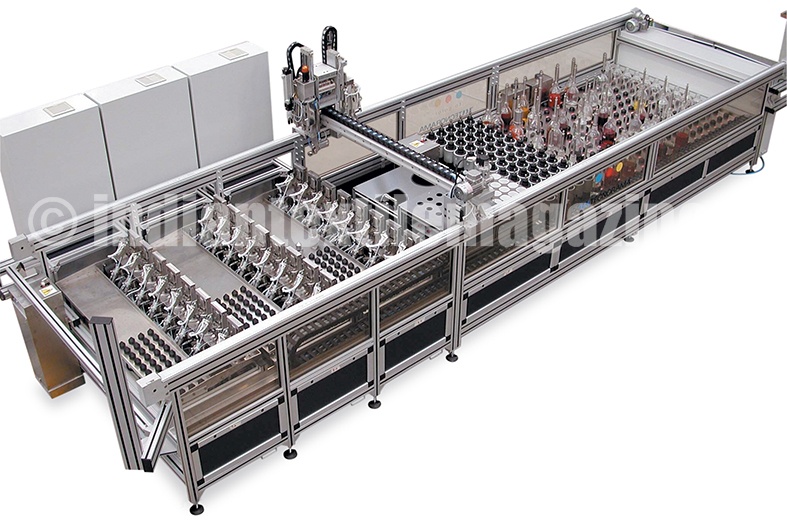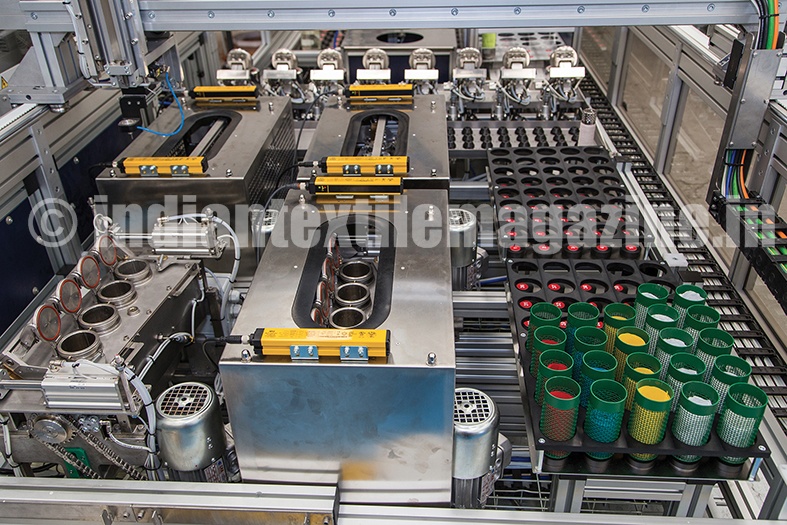Tecnorama, worldwide known for its innovative automatic systems for dosing and dyeing, is showing its latest solutions for the laboratory automation – DOS&DYE Compact and SHAKERAMA at ITME in Mumbai.
DOS&DYE Compact is a completely automatic system for managing and performing laboratory dyeing tests, for the creation of samples and relative recipes for use in production. It is composed by a Dosorama dispensing machine and a Dyrama robotized dying machine.
The technological excellence and the continuous innovation research that distinguishes Tecnorama led to achieve optimal levels of energy and environmental performance with significant benefits in terms of reducing production costs. This special system can be used to manage, in complete autonomy, all laboratory work cycles without requiring any manual intervention, helping to prevent human errors during work processes. The system is able to work for 24 hours a day, seven days a week, without the assistance of the laboratory operator and represent a cutting-edge solution.
The new patented SHAKERAMA is a laboratory dyeing machine devised to form part of the DOS&DYE Compact system that reproduces the working conditions of the standard I-R laboratory machines, but with the plus of the complete automation. In fact, SHAKERAMA, composed by several groups of 4 kiers each, is able to perform any kind of dyeing, with the addition of the automatic dosing and sample loading, providing a continuous work autonomy to modern laboratories. It is particularly suitable for dyeing knitwear and fabric made of all type fibres: natural, artificial and synthetic ones.
SHAKERAMA is conceived to work with groups of autoclaves carrying out simultaneously dyeing cycles with different recipes but using the same dyeing program. Thanks to the electric heating system, it is possible to reach a maximum temperature of 140°C, while the cooling system by means of a forced circulation coil with water, can bring back the temperature down to around 30°C.
The name SHAKERAMA means the system chosen to “shake” the liquor and move the textile material, to ensure uniform dyeing processes, with liquor ratios as low as 1:5.

